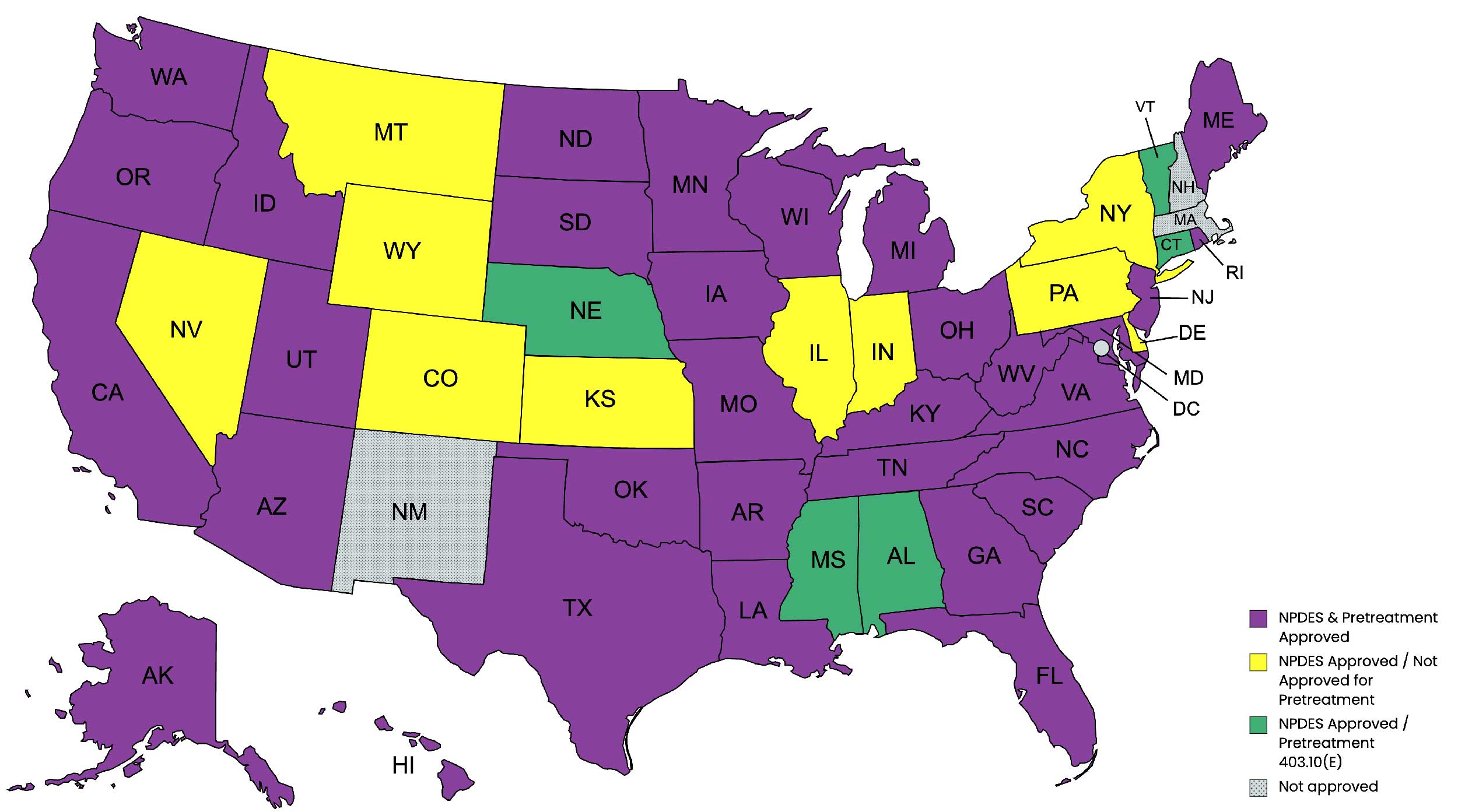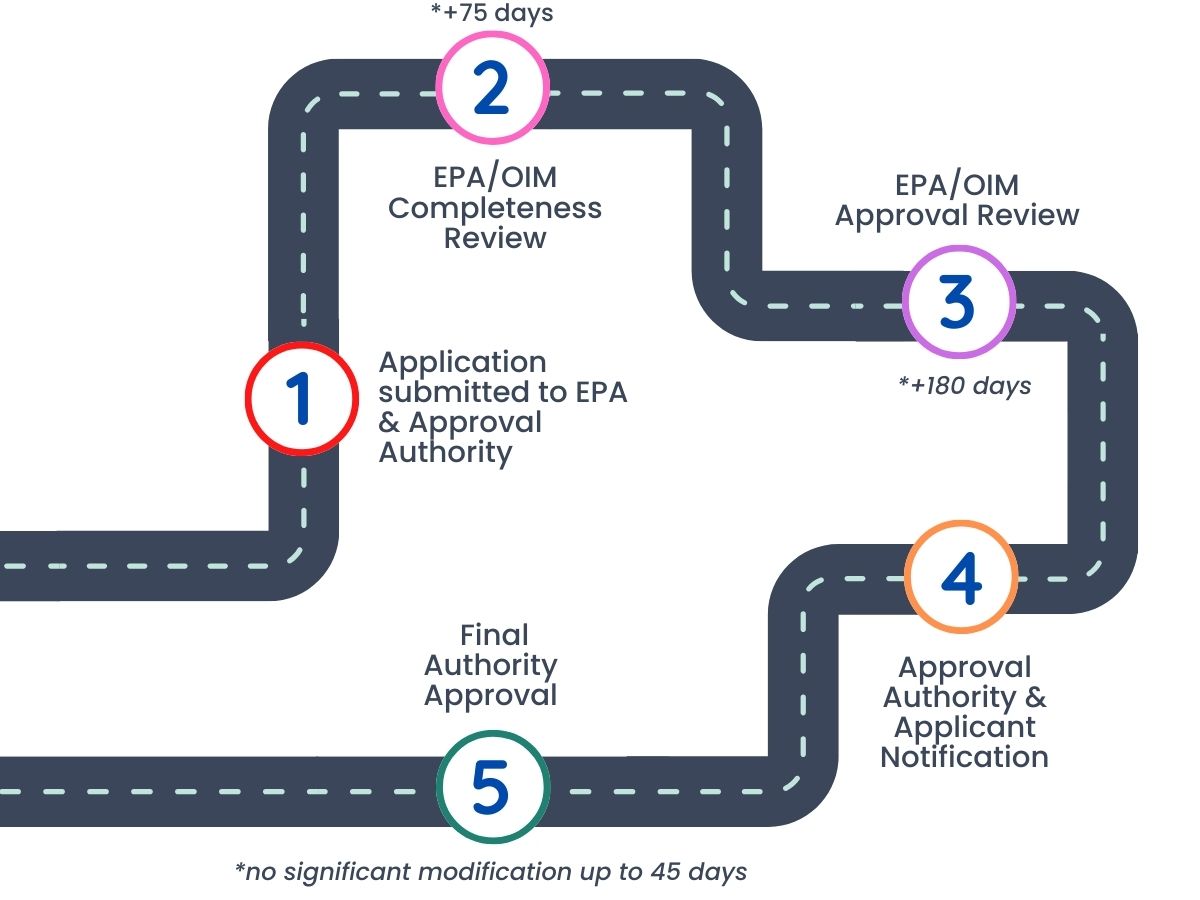CROMERR for Industrial Pretreatment Managers
Demystifying CROMERR: A Practical Guide to Attaining CROMERR Approval For Pretreatment Programs
CROMERR, or the Cross-Media Electronic Reporting Rule, in 2005, established the legal structure for electronic submissions under Title 40 of the Code of Federal Regulations to the EPA, as well as to state and (most importantly for pretreatment program managers) local governments authorized to manage programs under federal oversight.
This regulation permits and streamlines electronic reporting in environmental programs, upholding the same degree of corporate and individual responsibility and accountability previously associated with paper submissions.
In layman’s terms, and perhaps more relevantly for Pretreatment Program Managers, CROMERR is simply the rules governing how industrial users submit and sign data, files, or reports electronically.
The rule applies to all information identified by the EPA as being designated Priority 1 Reports or compliance reports to the control authority.
Under the CROMERR rules, certain methods of transmitting data are not generally allowed. Namely, these are:
- Emails with PDFs attached
- Scanned documents with physical signatures
- Files uploaded via a profile file-sharing service or File Transfer Protocol (FTP)
Table of contents
See SwiftComply in action
Chapter 1
Addressing CROMERR Misperceptions
Separating fact from fiction when it comes to CROMERR
Over recent months, the team at SwiftComply has been fielding questions from pretreatment professionals across the United States about what the new rules will mean for their utilities.
Some confusion has set in about what exactly they entail, and it seems that some common misperceptions have managed to become widely accepted amongst compliance and pretreatment managers.
The confusion stems from the fact that CROMERR applies to pretreatment slightly differently than it does for other compliance programs.
We’ve covered some of the most common ones below to ensure you are on the right track.
Misperception #1: “CROMERR was designed to guide the digitalization of the IPP compliance process.”
This is not the case.
The key focus of CROMERR is data and signatory security rather than compliance data management. With data privacy and IT security concerns being a top priority for government institutions right now, the likelihood is that we’ll see more regulations around the storage and transfer of data within the public sphere, not less.
By going through the approval process and attaining CROMERR approval for your program, the work you complete, and the learnings you take from it as a pretreatment program manager are likely to stand you in good stead beyond this process alone.
Misperception #2: “CROMERR approves software applications or data management solutions.”
It does not.
There is no CROMERR-approved software.
And still, this is the most common misperception that exists around CROMMER rules for POTWs.
CROMERR approval is not a ‘significant program modification’ for pretreatment under 40 CFR part 403.
This approval is for your pretreatment program.
Although not a significant modification, it does require interaction with the EPA Office of Environmental Information (CROMERR office), with final approval dictated and provided by your program’s approval authority, likely the state or regional EPA office.
While there are specific technical requirements from CROMERR for the software solution in use to receive electronically signed data, CROMERR specifically addresses your program’s ability to comply with the rule rather than providing any direct approval of a software application.
Chapter 2
CROMERR FOR IPP Managers
The Importance of CROMERR for Pretreatment Program Managers
It comes down to a combination of factors:
Operational Continuity: To accept any electronically signed documents (or data) from permitted industrial users and for the received information to be legally defensible, your pretreatment program must be CROMERR approved.
Responsibility and Accountability: The onus of attaining CROMERR approval lies with you, the pretreatment program manager, and is provided by your approval authority.
Required for Program Digitization: If you are looking to streamline your data management and receive (self-monitoring) data, reports, and permit renewals from Industrial Users electronically, your program must be CROMERR approved.
CROMERR & Pretreatment
5 Examples of Where CROMERR Applies to Pretreatment:
Priority Reports or any report the EPA has identified as likely to be material to potential enforcement litigation. Typically this is any report, data, or file that requires a signature.
- Self-monitoring reports and/or analytical sampling data and attachments
- Industrial Permit Discharge Permit Renewal Application
- Certification Statements
- Notification of becoming aware of a discharge limit exceedance – 24-hour notice
- Any reporting requirement from an IU stated in their discharge permit
Chapter 3
The Role of the EPA
When the EPA initiated CROMERR in 2005 it didn’t have local pretreatment programs in mind.
While there was one program that grandfathered a legacy solution for a short period, it wasn’t until 2012 that the first POTW pretreatment program became CROMERR-approved.
The EPA has developed technology and training to support all applicable (compliance) programs to assist them in obtaining CROMERR approval.
However, much of that focus is at the federal level, connecting to the Central Data Exchange (CDX) or at the state level to receive permits or comply with state-managed water quality and wastewater (NPDES) reported data.
When the first pretreatment program application went through the federal approval process, it was soon required to review and change the CROMERR process for pretreatment due to the status of pretreatment’s delegated authorities.
The EPA has since provided a wealth of information, but it hasn’t always been clear nor applicable for pretreatment.
The EPA OEI or the CROMERR office currently requires a full application and review through their office, culminating in an email notice of the application either meeting requirements or requiring modification.
Once the application has been determined to meet the requirements, the delegated authority may proceed with approval or any other state/local specific requirements needed, if any, in conjunction with the CROMERR application.
EPA Guidance
The EPA also provides guidance and technical assistance should a local program want to develop its own technology solution or use a solution proffered by the EPA Office of Mission Support.
These solutions will not provide any pretreatment or compliance data management, but they will provide a path forward for the use of technology or development that will meet the technical requirements of CROMERR.
Your CROMER application checklist documentation will need to outline the technical solutions and approach.
CROMERR Wasn’t Created for Pretreatment
CROMERR is not specific to Wastewater OR Industrial Pretreatment.
The regulation governs the submission of data and reports for all types of facilities that come under the guidance of the EPA.
As time has passed since its inception, it’s become clear that industrial pretreatment was not top of mind for EPA regulators when it was enacted.
Consequently, there has been quite a bit of back and forth between pretreatment facilities, delegated control authorities, and the Federal EPA since then.
Without a clear and consistent path to approval that meets all local program’s needs, a certain degree of fatigue has set in among pretreatment program managers.
While this is understandable, we are now at a point where most of the teething issues have been ironed out, and there is less friction in the application process than there has been over the past several years.
Chapter 4
Identifying Your Delegated Authority
Final CROMERR approval for your program must come from the approval authority you report to, not the Federal EPA.
This is important because it means you’ll probably have to take the lead in attaining approval.
At SwiftComply, we’ve already seen cases where states have been unaware that they are the approval authority, highlighting the need for pretreatment program managers to take a proactive approach to the approval process.
The map below should be a good starting point for identifying your delegated authority:
- NPDES & Pretreatment Approved (Purple)
- NPDES Approved /Not Approved for Pretreatment (Yellow)
- NPDES Approved / Pretreatment 403.10 (E) (Green)
- Not Approved (Grey)

Chapter 5
5 Steps to Obtaining CROMERR Approval
1. Contact the relevant State or EPA Approval Authority
This can be done by email, and you should CC the EPA Office of Environmental Information (OEI) on the communications.
2. Confirm and attest the legal authority
What has made CROMERR confusing for many pretreatment facilitates is the fact that they don’t know who their legal authority might be.
In some cases, authority is delegated to the state, and in others, to the EPA region if a State’s authority has not been applied for and approved.
Don’t assume your state or EPA region authority will be aware of their role and reach out to you.
This is your responsibility, not theirs.
You should also inquire whether your state or POTW has received CROMERR approval or has e-signature-specific regulations. If so, these should be cited.
Attestation to your legal authority is typically a one-page letter from your utilities legal team.
3. Complete and submit your CROMERR Application
The application ultimately will contain a cover sheet, CROMERR checklist (20+ questions/answers), legal authority letter, Electronic Signature Agreement, and other technical or supporting documents referenced in the checklist.
The completed documents are submitted to your approval authority and the EPA CROMERR office for review.
4. Set reminders to check in with OEI during the approval process
It’s a good idea to set periodic reminders in your work calendar to reach out for an update on your application progress.
Again, this is your responsibility, so ensuring it hasn’t stalled due to missing or incomplete information on your application will be key.
They’ll likely require more information from you throughout the process, so keeping on top of it will ensure you get it done as quickly as possible.
5. The Approval Authority makes the final approval
This last step doesn’t require much from you as an IPP Manager other than playing the waiting game.
However, if you do find that approval isn’t forthcoming in line with our timelines above, you should reach out for an update.

Chapter 6
Conclusion
We hope this guide has made the CROMERR regulation itself and the approval process for attaining it clearer for you.
The thought of navigating the process is much worse than actually doing it.
To make the task more manageable, we have created a printable Application Checklist outline, which mirrors the questions/answers section of the EPA-provided Checklist document.
We don’t normally advocate for anything paper-based, but having a checklist to pin to your board will help keep it front of mind and provide a little motivation as you gather the documentation you need and tick off the different stages you complete.
You can download it at the link below to track of your progress and stay on top of your application.
Navigate CROMERR with Confidence - Your Partner in Compliance Success
Getting CROMERR approved doesn’t have to be complicated.
Our team has already guided several pretreatment programs through the process of applying for and obtaining CROMERR approval. This experience has given us a deep understanding of the rules and how to navigate the approval process.
If you’re wondering about the next steps or need some help with your application, feel free to reach out for a chat with one of our experts.
Useful Resources for Your CROMERR Application
There are numerous references on the EPA website about the CROMERR approval processes. However, for approved pretreatment programs at a POTW, there is a single information reference found under:
“FAQs, Special Provisions, How are publicly-owned pretreatment works (POTW) pretreatment program applications for electronic reporting handled?”
Frequently Asked Questions about CROMERR
Other useful resources include:
